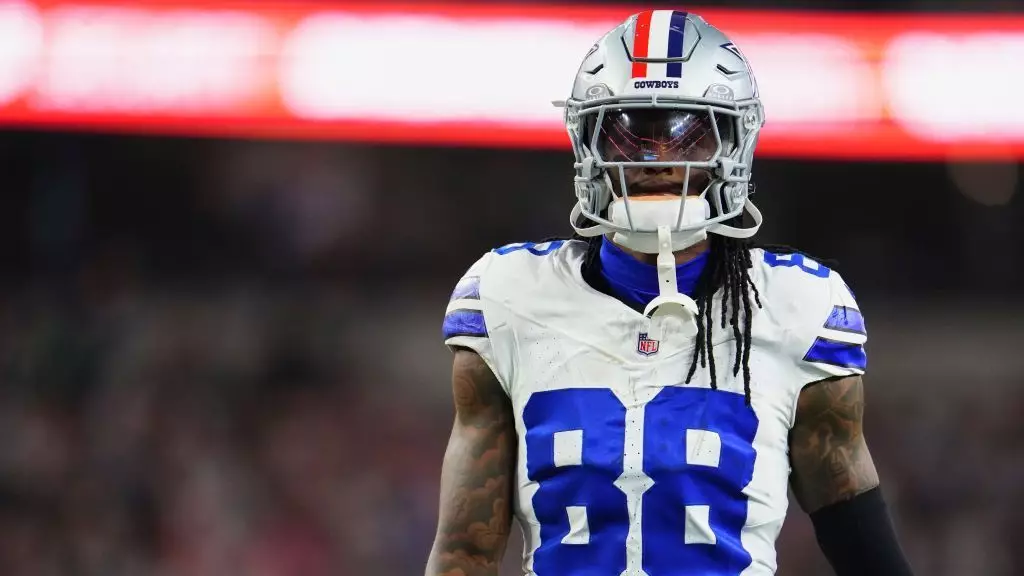The Dallas Cowboys have recently witnessed a disheartening 34-6 defeat against the Philadelphia Eagles at their home turf, AT&T Stadium. This loss was not solely attributed to the team’s performance; the issue of visibility, particularly due to sunlight, emerged as a repeated topic of discussion. In a league where every detail counts, the Cowboys find themselves grappling with an entirely preventable issue that contributes to their struggles on the field.
In one pivotal moment during the game, the Cowboys were on the verge of flipping the script. Trailing 7-3 and with a second-and-goal situation from the Eagles’ three-yard line, quarterback Cooper Rush had a prime opportunity to connect with wide receiver CeeDee Lamb for a potentially game-changing touchdown. Yet, this chance slipped away as Lamb was unable to spot the pass because the sun was glaring directly in his eyes. Instead of seizing the moment, the Cowboys had to settle for a field goal, which ultimately did little to shift the momentum. The inability to capitalize on such opportunities is a microcosm of the larger issues facing the Cowboys.
The sun’s interference on the field is not merely a minor inconvenience; it’s indicative of a systemic oversight. This recurring problem raises questions regarding the coaching staff’s game-day strategies. Should they be re-evaluating play-calling or offensive positioning based on known sun patterns? As the clock ticks down on the season, this consideration may not just be a matter of tactical execution but a reflection of the team’s adaptability to external factors.
In the aftermath of the loss, Cowboys’ owner and general manager Jerry Jones addressed questions concerning the sunlight issue with characteristic candor. He acknowledged the sun’s presence at AT&T Stadium but seemed dismissive of the idea that it required actionable solutions, such as installing curtains to mitigate glare. Denying the need for change, Jones remarked, “Everybody’s got the same thing,” reinforcing a sense of complacency within the organization. This attitude may stem from the substantial investment of $1.2 billion in the stadium — a facility that has stood for just over 15 years.
Yet, this rigidity raises critical concerns about Jones’ leadership and willingness to adapt. While it’s true that other teams face similar challenges, the focus should not be on what others do but rather on seeking solutions that could mitigate preventable errors. Shouldn’t the priority be optimizing conditions for players to thrive, especially given the substantial resources available? The current approach is reminiscent of the old adage: “If it ain’t broke, don’t fix it,” but this mentality could ultimately backfire when it affects game outcomes.
CeeDee Lamb’s reaction to the situation sheds light on how players perceive these issues from the field. His immediate acknowledgment of the sun as an obstacle indicates a shared frustration that extends beyond individual incident. “Yes,” he remarked, expressing enthusiasm for possible curtain solutions, highlighting a gap between executive decision-making and player experience on the field. Though Lamb subtly refrained from directly approaching Jones on this matter, his body language and comments let it be known that more could be done to protect players from such manageable disruptions.
This generational gap in approach reflects a broader problem within the team culture. Engaging players in discussions about playing conditions demonstrates not only respect for their insights but also an acknowledgment of their direct experiences. Fostering such an environment could be transformative, leading to enhanced communication and potentially improved player performance.
The Cowboys’ recent loss serves as a crucial indicator of the need for introspection and evolution within the organization’s approach to the challenges it faces. As the team continues to grapple with external elements like sunlight, the focus should shift towards proactive strategies that could safeguard players’ performances. In a league where every detail matters, failing to address such easily identifiable issues could hinder the Cowboys as they chase success in future games. As it stands, the Cowboys must navigate the shadows cast not just by the sun, but by outdated attitudes and practices that limit their potential on the field.

